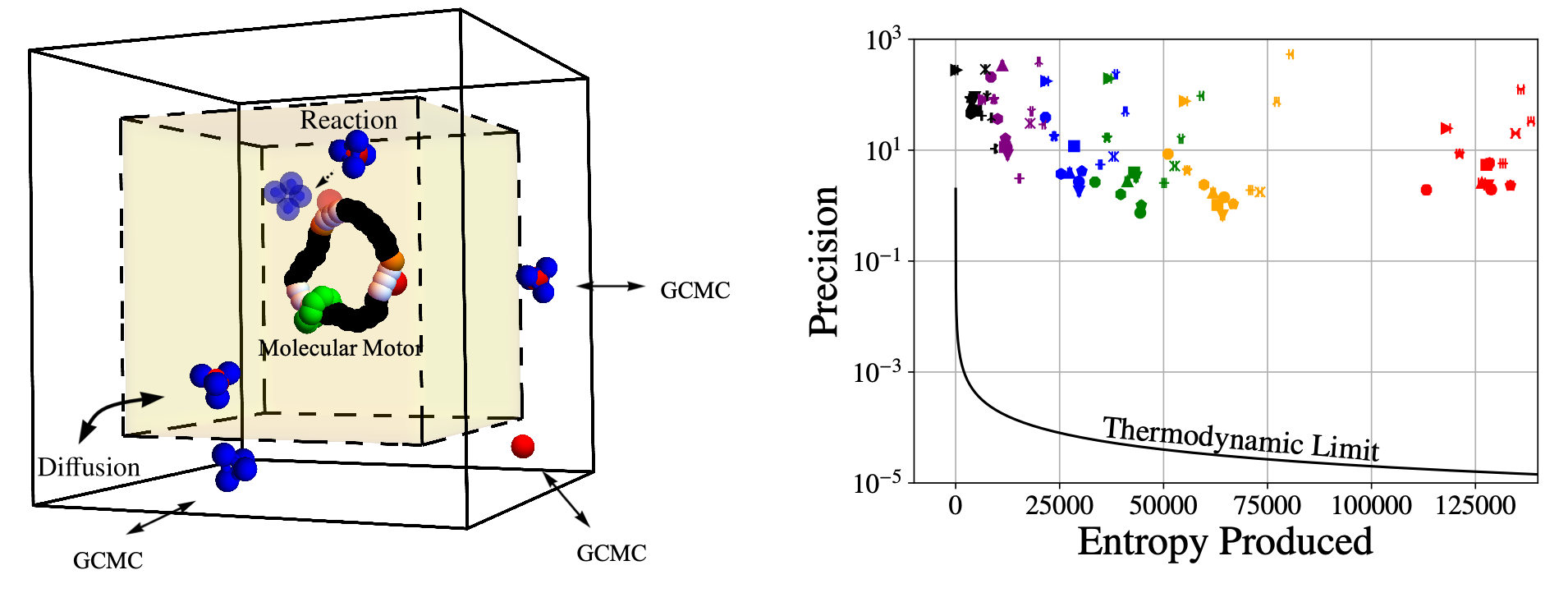2023 AIChE Annual Meeting
(525f) Calculating Entropy Production with Nonequilibrium Molecular Dynamics
Authors
In this talk I will present a method for treating chemical nonequilibrium in molecular dynamics simulations. By introducing grand canonical Monte Carlo chemostats for reactants and products, the concentrations of species undergoing reactions can be held away from their thermodynamic equilibrium. I will also present a method for calculating the entropy produced in this nonequilibrium chemical state. Entropy production is a necessary component in thermodynamic uncertainty relationships, which bound the precision of a system based on the entropy produced. In this way I can compare how close a nonequilibrium system is to thermodynamic bounds.
I will demonstrate these methods by simulating a model synthetic molecular motor. By holding the system at a high concentration of fuel and low concentration of waste, away from equilibrium concentrations, the motor has a continuous supply of free energy. In the presence of this free energy supply the motor produces mechanical work. By calculating the precision of this work and the entropy produced in the system, I find that the motor model operates far from thermodynamic limits. These results suggest that the performance of synthetic motors can be greatly improved and demonstrate the power of the nonequilibrium simulation method and entropy production calculation.
